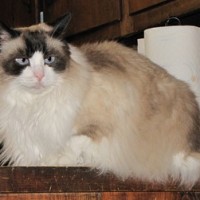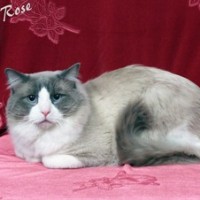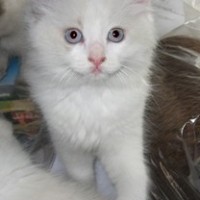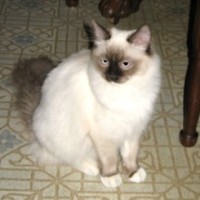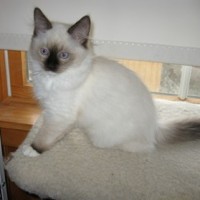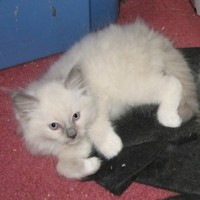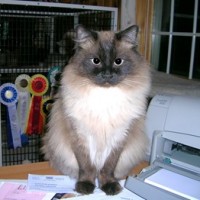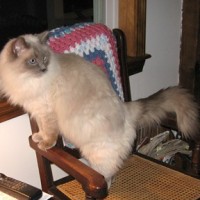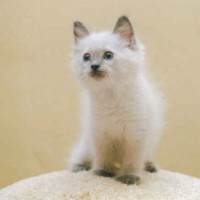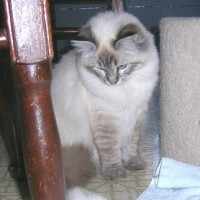It was Beau Jangles who got me into breeding Ragdolls. Although he was sold to me as a pet, I was allowed to show him. That introduced me to the world of pedigreed cat breeding.
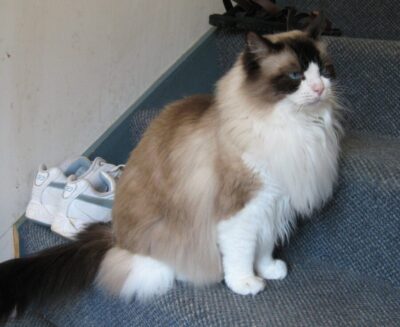
From the time I got my first Ragdoll, I’d been fascinated with its origin story. A truly American breed, it had been created by a woman named Ann Baker who lived in California. She found that two of her neighbor’s feral cats had produced a litter of very friendly kittens. The mother, Josephine, was an Angora type white cat and the father, Daddy Warbucks, was a pointed, blue-eyed mix bred cat that looked like a Birman. All Ragdolls are descended from those two. Ann took their offspring and developed the breed, but she was very protective of it and had great control over the people who wanted to breed them too. She was opposed to having them be part of the mainstream cat registries, such as the Cat Fanciers Association (CFA) and The International Cat Association (TICA). Thankfully, a breeder named Denny Dayton of Blossom-Time Ragdolls, broke free of her, and the Ragdoll became a recognized breed.
I and everyone else who loves Ragdolls, are mainly attracted to the beauty of the pointed coloring and blue eyes, and to the affection they have for their people. No standoffish cats here. Some even go to the door to greet strangers!
The Ragdoll cat comes in very specific patterns and in various pointed colors. Ragdolls are blue-eyed pointed cats. The definition of a pointed cat is one with darker pigment on the extremities. The color is actually temperature-sensitive, so it gets darker on the cooler parts of the cat, which is its extremities. With Ragdolls, white may overlay some of the points in certain patterns. Other blue-eyed, pointed breeds are the Siamese and Himalayan.
Colors
The most common colors for Ragdolls are:
Blue – steel gray on the points and lighter gray on the body.
Seal – dark brown on the points and light tan to light brown on body.
Lilac – lilac or pinkish tone of gray on points and milky white on body.
Chocolate – milk chocolate color on points and ivory color on body.
Red (Flame) – orange color on points and a creamy color on body.
Cream – pale creamy peachy color on points and white on body.
Tortie – tortoiseshell on points, creamy color on body.
![]()
 Patterns
Patterns
The Ragdoll comes in three patterns and all three can come in lynx point, which is tabby striping on the points.
Bicolor – bottom half of cat is white; white legs, white belly. Face has a white inverted V.
Mitted – cat has white mittens on front feet, white boots on the back, white chin, white chest with white line running down the belly. Can also have a white blaze on the face.
Colorpoint – cat has no white on it. Its feet, face and tail are all the darker point coloring.
Lynxpoint – in all three patterns, the cat has tabby striping overlaying the points.
![]()
Below are pictures of the patterns and colors that I bred at Foss Mountain Ragdolls. You can see an adult cat in mature coloring and what it looks like as a kitten. Kittens are born white and their coloring comes in over time. They do look quite different as kittens!
Click photo for a larger view.

Check out our online store at Foss Mountain Farm Alpaca Products to see the wonderfully warm alpaca accessories and yarn that we have. For more about our products, see our product page or contact us.
![]()


